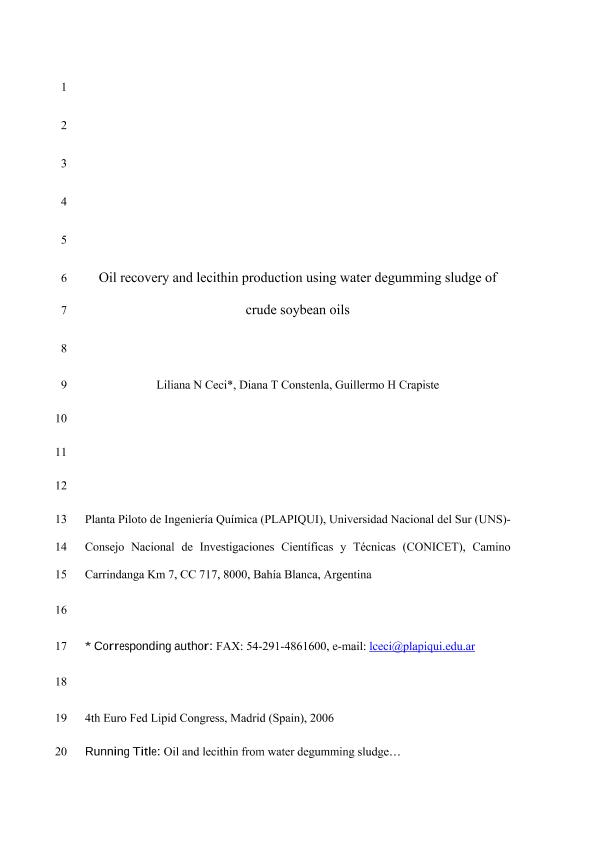Artículo
Oil recovery and lecithin production using water degumming sludge of crude soybean oils
Fecha de publicación:
11/2008
Editorial:
John Wiley & Sons Ltd
Revista:
Journal of the Science of Food and Agriculture
ISSN:
0022-5142
Idioma:
Inglés
Tipo de recurso:
Artículo publicado
Clasificación temática:
Resumen
BACKGROUND: Wet gums produced during aqueous degumming of crude soybean oils are currently processed to produce lecithin or added to meals to increase their nutritive value for animal feed. Oils occluded in these gums are generally not recovered or processed. In this work, three methods to recover occluded oil and obtain lecithin from wet gums were assayed: direct extraction of oil with cold acetone (Method I), extraction after water elimination under vacuum (Method II) and by solvent partition with hexane/ethanol (Method III). RESULTS: Higher oil yields (up to 588 g kg−1 of occluded oil) were obtained when water was eliminated before extraction (Methods II and III). No significant differences were observed in lecithin yields between three methods (720–807 g kg−1 of dried gums). Recovered oils had acidity = 16.7–21.7 g kg−1 as oleic acid, TOTOX (total oxidation) values ≤ 8.82, unsaponifiable matter = 9.0–12.1 g kg−1, and Phosphorus = 87–330 mg kg−1. Lecithins obtained by Methods I, II and III hexane phase had the same purity level (610–691 g of total measured phospholipids kg−1). CONCLUSIONS: The occluded oil in soybean wet gums can be recovered, with quality and stability indexes compatible with their reinsertion in the productive process, by water elimination and extraction with acetone. Lecithins can be obtained with different phospholipid composition and diverse application fields.
Palabras clave:
Soybean Lecithin
,
Soybean Oil
,
Gums
,
Phospholipids
Archivos asociados
Licencia
Identificadores
Colecciones
Articulos(PLAPIQUI)
Articulos de PLANTA PILOTO DE INGENIERIA QUIMICA (I)
Articulos de PLANTA PILOTO DE INGENIERIA QUIMICA (I)
Citación
Ceci, Liliana Noemí; Constenla, Diana Teresita; Crapiste, Guillermo Hector; Oil recovery and lecithin production using water degumming sludge of crude soybean oils; John Wiley & Sons Ltd; Journal of the Science of Food and Agriculture; 88; 14; 11-2008; 2460-2466
Compartir
Altmétricas




